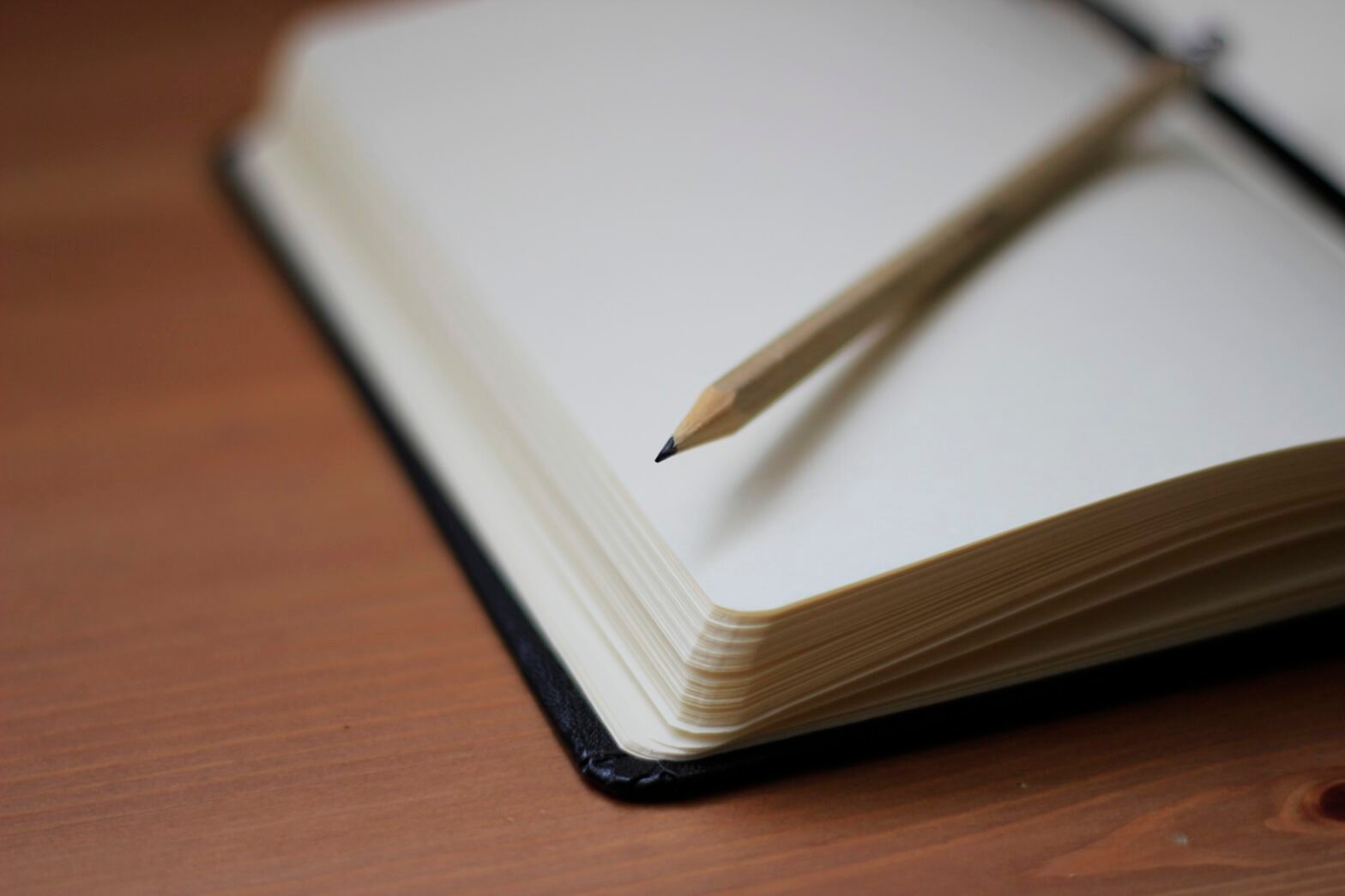“How to Capture the Reader’s Attention When Starting a Letter” offers valuable insights on the art of beginning a letter in a captivating manner. This informative summary emphasizes the significance of a strong subject line, as research indicates that nearly half of recipients dismiss emails with weak subject lines. The article emphasizes the impact of personalization, intriguing phrases, and the inclusion of statistics or percentages in the subject line to engage the reader. Furthermore, it suggests incorporating emojis to appeal to a younger audience. The article also provides a comprehensive guide on five common ways to start a letter, ranging from the most formal to the least formal. Additionally, it offers tips on how to hook the reader within the first few lines of the letter and emphasizes the importance of striking a balance between what the sender has to offer and the recipient’s needs.

Importance of a Strong Subject Line
A strong subject line is crucial for any written communication as it sets the tone for the entire message and determines whether it will be opened and read. In fact, studies have shown that 47% of people do not open an email with a weak subject line. This highlights the significance of crafting a subject line that captures the reader’s attention and entices them to engage with the content of the letter.
Statistics on the impact of subject lines
To further emphasize the importance of a strong subject line, let’s explore some statistics on its impact. Research has shown that personalized subject lines have a 26% higher open rate compared to generic subject lines. This highlights the power of personalization in capturing the recipient’s attention right from the start.
Moreover, subject lines that include numbers, percentages, or statistics tend to perform better. They provide factual data that appeals to the reader’s logical and analytical thinking, making them more likely to open and engage with the letter. Incorporating these elements into the subject line can empower it and make it more compelling.

The role of subject lines in capturing attention
The main objective of a subject line is to capture the reader’s attention and convey the value of the content within the letter. By utilizing strategies such as personalization, curiosity, and incorporating engaging language, subject lines can effectively pique the reader’s interest and encourage them to explore further.
Personalization
One powerful technique for capturing attention in the subject line is personalization. Addressing the recipient by their name creates a sense of individuality and relevance, making them more likely to open the letter. Studies have shown that personalized subject lines have a higher open rate, as they establish a connection with the reader and demonstrate that the message is specifically tailored to them.
To effectively personalize a letter, it is important to gather and utilize accurate recipient information. Double-checking the spelling of the recipient’s name and ensuring that the data used is up-to-date can greatly enhance the impact of the subject line.
Tips for effectively personalizing a letter
To maximize the effectiveness of personalization in a letter, consider incorporating the recipient’s name strategically. For example, using their name in the subject line can create a sense of importance and urgency. Instead of a generic subject line like “Important Announcement,” a personalized subject line such as “John, Urgent Announcement Regarding Your Account” immediately grabs the recipient’s attention.
Additionally, personalization can extend beyond just addressing the recipient by name. Tailoring the content of the letter to the recipient’s specific interests or needs can further enhance engagement. This can be done by conducting thorough research on the recipient to understand their preferences, challenges, or goals.
Creating Curiosity
Another effective strategy for capturing attention in the subject line is by creating curiosity. By using success stories, case studies, or providing examples, the subject line can pique the reader’s interest and make them eager to learn more. The element of curiosity compels the reader to open the letter and discover what valuable information or insights await them.
Using success stories to engage the reader
Success stories are a powerful tool for capturing attention and inspiring the reader. In the subject line, mentioning a success story related to the content of the letter can instantly intrigue the reader and make them curious about the details. For example, a subject line like “How Sarah Increased Sales by 300% in 3 Months – Learn Her Secrets!” sparks curiosity and motivates the reader to open the letter to uncover the strategies for success.
Incorporating case studies to pique interest
Case studies are another effective way to engage the reader and demonstrate the practical application of the information being discussed. By mentioning a compelling case study in the subject line, the reader is enticed to explore how the insights presented in the letter can be applied to their own situation. For instance, a subject line like “How Company X Transformed Their Customer Service and Increased Customer Satisfaction by 50% – Case Study Inside!” builds curiosity and encourages the reader to delve deeper into the letter.
Providing examples to captivate the reader
Including examples in the subject line can also captivate the reader’s attention. By giving a preview of the valuable content within the letter, the subject line entices the reader to open it and discover additional examples or insights. For example, a subject line like “3 Real-life Examples of Successful Marketing Campaigns – Learn from the Experts!” sparks curiosity and motivates the reader to explore the letter for actionable examples and tips.

Using Numbers, Percentages, and Statistics
Including numbers, percentages, and statistics in the subject line can add credibility and create a sense of reliability. By incorporating factual data, the subject line appeals to the reader’s logical thinking and increases their interest in the letter’s content.
Empowering the subject line with factual data
Numbers, percentages, and statistics can empower the subject line by providing concrete evidence of the value or impact conveyed within the letter. For example, a subject line like “Increase Your Productivity by 20% – Proven Strategies Inside!” not only grabs the reader’s attention but also instills a sense of confidence in the effectiveness of the strategies mentioned.
Benefits of incorporating numerical information
Including numerical information in the subject line provides a clear and concise overview of the content within the letter. This allows the reader to quickly assess whether the information is relevant to their needs or interests. Instead of a vague subject line like “Boost Your Sales,” a subject line like “How to Increase Sales by 30% in 3 Months – Actionable Steps Inside!” immediately communicates the specific benefit and entices the reader to open the letter for more details.
Emojis as Attention Grabbers
In the era of digital communication, emojis have become an integral part of online interactions, especially among the younger audiences such as Gen-Zers and Millennials. Utilizing emojis in the subject line can be an effective way to grab their attention and make the letter stand out in a crowded inbox.
Targeting Gen-Zers and Millennials
Gen-Zers and Millennials are a significant demographic, and understanding their preferences and communication style is crucial for effective engagement. Research has shown that emojis are widely used and understood by these age groups, making them an ideal tool for capturing their attention. By incorporating emojis in the subject line, the sender can establish a connection with the younger audience and increase the chances of the letter being opened and read.
Choosing appropriate emojis for professional letters
While emojis can be attention-grabbing, it is important to choose them wisely and consider the professional context. Using emojis that align with the tone and content of the letter can enhance its impact and appeal. For example, a subject line like “🔥 Don’t Miss Out on Our Exclusive Offer! Limited Time Only!” uses an appropriate emoji to convey excitement while maintaining professionalism.
However, it is essential to exercise caution and avoid overusing emojis or using inappropriate ones that may undermine the credibility or seriousness of the letter. Careful consideration of the target audience, the nature of the message, and the context is necessary to ensure that emojis enhance rather than detract from the overall communication.
Different Ways to Start a Letter
The opening of a letter sets the tone for the entire message and can greatly influence the reader’s perception and engagement. Choosing the right approach to start a letter depends on factors such as formality, familiarity, and the desired level of rapport with the recipient.
Formality levels in starting a letter
Different levels of formality are appropriate for different types of letters. For formal letters, such as business or official correspondence, a more formal approach is required. On the other hand, informal letters or letters addressed to acquaintances or friends allow for a less rigid and more relaxed tone.
Most formal approach to starting a letter
The most formal way to start a letter is by using the recipient’s honorific and full name, along with the sender’s honorific and full name. For instance, “Dear Mr. Smith,” or “Dear Dr. Johnson,” followed by a formal greeting such as “I hope this letter finds you well.”
This approach is suitable for professional or official correspondence where maintaining a respectful and formal tone is essential. It sets a tone of professionalism and establishes the sender’s respect for the recipient.
Balancing formality and familiarity
For letters that require a balance between formality and familiarity, addressing the recipient by their title and last name can be appropriate. For example, “Dear Professor Johnson,” or “Dear Mrs. Smith,” followed by an appropriate greeting.
This approach acknowledges the recipient’s professional or social status while maintaining a level of familiarity. It is often used in business settings or when writing to individuals with whom the sender has a professional relationship.
Less formal approaches for informal letters
For informal letters or letters addressed to acquaintances or friends, a more relaxed and casual approach can be taken. Starting the letter with a friendly greeting such as “Hi,” “Hello,” or “Hey” followed by the recipient’s first name is appropriate.
This approach conveys a sense of familiarity and suggests a personal relationship between the sender and the recipient. It allows for a more informal and conversational tone throughout the letter.
Tips for Hooking the Reader
Capturing the reader’s attention from the very beginning is crucial for maintaining their engagement throughout the letter. It is often said that the first sentence is the most important part of a letter, as it determines whether the reader will continue reading or lose interest.
The importance of a captivating opening sentence
The opening sentence serves as a hook to reel in the reader and ignite their curiosity. It should be crafted in a way that captures their attention and compels them to continue reading. A strong opening sentence can make a lasting impression and set the tone for the rest of the letter.
Engaging the reader from the first line
To engage the reader from the first line, consider starting with a thought-provoking question, an intriguing statement, or a compelling anecdote. This instantly sparks curiosity and motivates the reader to delve deeper into the letter to find out more.
Techniques for drawing the reader in
There are several techniques that can be used to draw the reader in and ensure their continued engagement. One approach is to create a sense of urgency by highlighting time-sensitive information or exclusive offers. This motivates the reader to take immediate action and continue reading to discover more about the limited opportunity.
Another technique is to appeal to the reader’s emotions. By tapping into their desires, fears, or aspirations, the opening sentence can evoke an emotional response that captivates the reader and makes them invested in the content of the letter.
Lastly, teasing the reader with a preview of valuable information or insights can also be effective. Providing a glimpse of what they can expect from the letter creates anticipation and motivates them to read further in order to gain the full benefits.
Balancing Offerings and Recipient’s Needs
When starting a letter, it is crucial to strike a balance between showcasing what the sender can offer and addressing the recipient’s needs. Understanding the recipient’s expectations and tailoring the letter to meet their specific needs can greatly enhance engagement and responsiveness.
Understanding the recipient’s expectations
Before addressing the recipient’s needs, it is important to gain a thorough understanding of their expectations. This involves conducting research, gathering information, and analyzing their preferences, challenges, or goals. By understanding what the recipient desires or requires, the sender can tailor the content of the letter in a way that is relevant and valuable to them.
Identifying what the recipient needs
Once the recipient’s expectations are understood, it is essential to identify what they truly need. This goes beyond surface-level desires and delves into the underlying problems or challenges they are facing. By addressing these needs directly in the letter, the sender demonstrates their understanding and reveals how their offerings can provide a solution.
Aligning offerings to address recipient’s needs
When showcasing what the sender can offer, it is important to align their offerings with the recipient’s needs. Highlighting the specific benefits or value that the recipient will gain from the offerings creates a compelling case for engagement. By addressing the recipient’s needs and offering a solution, the sender positions themselves as a valuable resource and increases the likelihood of a positive response.
Structuring the Opening Paragraph
The opening paragraph of a letter plays a crucial role in setting the tone, providing relevant information, and capturing the reader’s attention. By organizing and structuring this paragraph effectively, the sender can optimize engagement and ensure a clear understanding of the purpose of the letter.
Organizing the first paragraph effectively
The first paragraph should be organized in a concise and coherent manner. It should provide an overview of the purpose and content of the letter, while also establishing a connection with the recipient. Starting with a concise summary of the main point or benefit that the letter intends to convey can immediately grab the reader’s attention and create interest.
Providing relevant information in the opening
In addition to summarizing the letter’s purpose and content, the opening paragraph should also provide relevant information that sets the context for the reader. This can include details such as the sender’s name, organization, or any pertinent background information that establishes credibility.
Including this relevant information at the beginning of the letter allows the reader to quickly assess the importance and relevance of the message. It provides them with the necessary context to understand the significance of the content and demonstrates the sender’s professionalism and preparedness.
Setting the tone and purpose of the letter
The opening paragraph sets the tone for the entire letter, so it is important to establish the desired tone right from the start. Whether the tone is formal, friendly, or persuasive, it should be reflected in the opening paragraph to create a cohesive and consistent message.
Additionally, the opening paragraph should clearly state the purpose of the letter. This allows the reader to immediately understand the intention behind the communication and prepares them for the content that will follow. By setting a clear purpose, the sender can guide the reader’s expectations and increase their engagement.
Using Engaging Language
The language used in a letter greatly impacts its effectiveness and engagement. Choosing impactful words and phrases, avoiding clichés and generic language, and injecting enthusiasm and energy into the letter can make it more compelling and memorable.
Choosing impactful words and phrases
The choice of words and phrases greatly influences the reader’s perception and engagement. By using impactful and descriptive language, the sender can evoke emotions, create vivid imagery, and make the letter more engaging.
For example, instead of saying “Our product is great,” a more impactful statement would be “Our revolutionary product will transform your life.” The latter statement conveys a stronger message and instills a sense of excitement and curiosity in the reader.
Avoiding clichés and generic language
Using clichés or generic language can make a letter seem unoriginal and uninspiring. It is important to avoid overused phrases or clichéd expressions that may diminish the impact of the message.
Instead, strive for authentic and unique language that captures the reader’s attention and offers fresh perspectives. By using original and creative language, the sender can differentiate their letter from others and make it more memorable.
Injecting enthusiasm and energy into the letter
Enthusiasm and energy are contagious, and they can significantly enhance the reader’s engagement and receptiveness. By injecting enthusiasm into the language of the letter, the sender can convey passion, excitement, and a genuine desire to connect with the reader.
For instance, using phrases such as “We are thrilled to present,” “Exciting opportunities await,” or “Join us in this incredible journey” can create a sense of enthusiasm and motivate the reader to take action. This enthusiastic tone conveys the sender’s excitement and resonates with the reader, making the letter more impactful.
